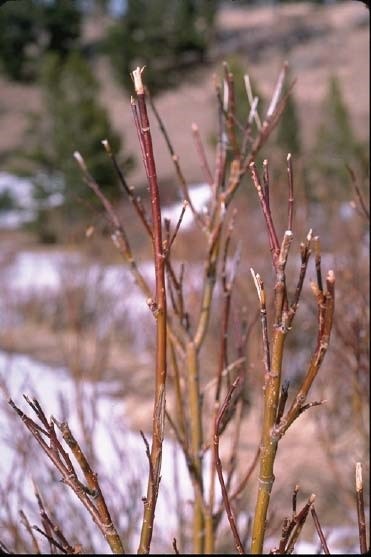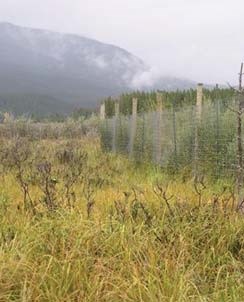Last updated: November 8, 2022
Article
Effects of Elk Herbivory

The Question: How is the large population of elk affecting the park’s vegetation and soils?
Elk graze plant material and browse on woody twigs and bark with the potential to cause detriment to vegetation especially where elk are unnaturally abundant as they have been in the park since the early 1990s due to a lack of predators. Thus knowledge of how the park’s large elk population affects vegetation both above and below ground is important for resource managers to understand. Past studies and management of western U.S. rangeland have focused only on changes in net above-ground vegetation production, which might be short-lived and mask changes in root biomass or long-term nitrogen storage pools in soil. A reduction of nitrogen, an essential nutrient that determines ecosystem production, could reduce long-term plant productivity and change the types of species found in an area. Kate Schoenecker of the USGS and colleagues set out to determine not only the direct effects of vegetation consumption by elk on their winter range, but also the often-unnoticed indirect effects: nitrogen content in plants and soil, quality and quantity of leaf litter, soil environments, and microbial rates of nutrient cycling.
The Project: Use elk exclosures and several nitrogen measurements to determine soil fertility and nitrogen fluxes.
Schoenecker utilized three elk exclosures set up by the park in 1963 as well as 12 that her team set up in 1994 to determine the eff ect of elk herbivory on plant production and soil fertility. These two different exclosure installment years gave researchers the ability to look at elk eff ects after periods of four and 35 years. Nutrient sampling was conducted outside of the fences where the elk were allowed to graze and inside the exclosure fences where elk were prohibited from grazing, allowing researchers to deduce the eff ect of elk herbivory on vegetation and soil fertility. Researchers determined above-ground and below-ground nitrogen pools through analysis of nitrogen concentrations in vegetation clippings and soils/roots, respectively. Additionally the investigators measured leaf litter nitrogen deposition, soil nitrogen available to plants for uptake, and amount of nitrogen taken in by elk during herbaceous consumption to establish the eff ects of elk on nitrogen fluxes. The team also established the amount of nitrogen deposited by elk via fecal and urinary waste by observing elk for 24-hour periods in order to determine potential rates of nitrogen transfer by elk among diff erent vegetation types.The Results: Elk negatively impact willow and aspen by causing a net loss of nitrogen, which reduces plant productivity and may alter the types of plants that can survive.
Findings indicate that in willow and aspen vegetation types, elk herbivory had a signifi cant negative eff ect on nitrogen dynamics by causing a net transfer and loss of nitrogen from willow and aspen communities. For instance, elk herbivory signifi cantly reduced willow shrub size, plant biomass, above-ground nitrogen pools, litter deposition, and the amount of nitrogen willows produce annually. Nitrogen losses from willow and aspen communities from elk herbivory were not compensated for by inputs of nitrogen from elk defecation and urination.Due to lowered nitrogen availability the researchers saw evidence of substantial reductions in plant productivity and growth rates in willow and likely aspen communities. In light of their results, the researchers recommend management of elk numbers and their subsequent eff ects upon park vegetation communities by reducing the elk population or by eliminating over-concentrations of elk.
This summary is based on published, peer-reviewed and/or unpublished reports available at the time of writing. It is not intended as a statement of park policy or as a defi nitive account of research results. For more information on the park’s research program, see www.nps.gov/romo
Updated: January 2008
